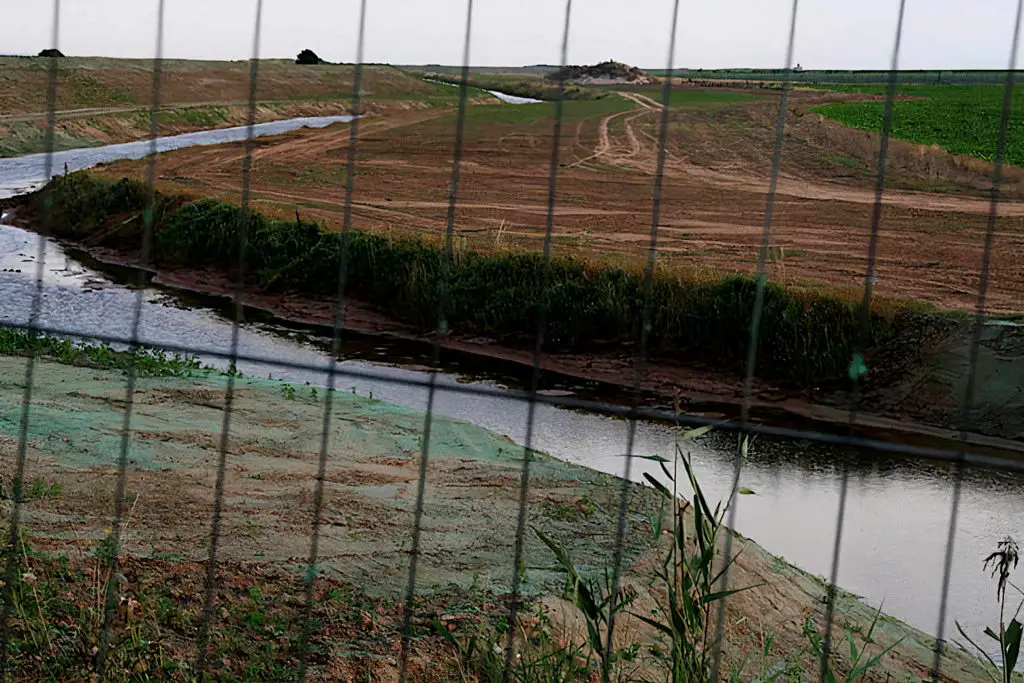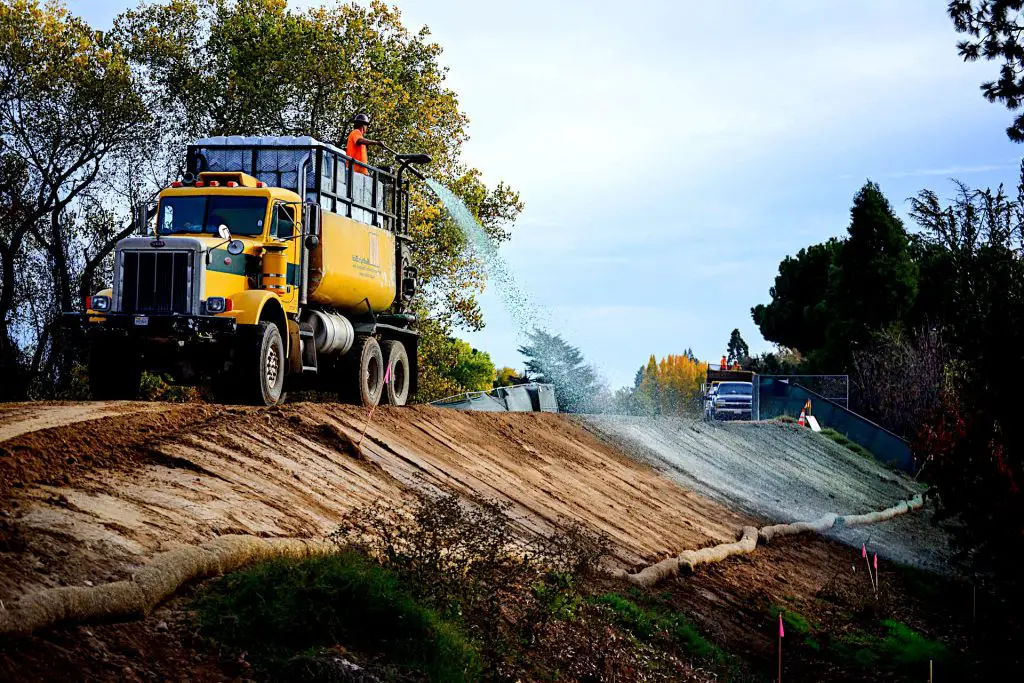What Are the Pros and Cons of Hydroseeding | Is Hydroseeding Right for You?
Although being originally developed in the 1940s as a way of quickly and efficiently distributing seed over a wide area, it is only largely over the last twenty to thirty years, that hydroseeding has gained in popularity as a way of laying down a lawn for homeowners.
There are a number of reasons for this but generally speaking, it has a number of advantages over more traditional methods of establishing a lawn. That being said there are also some drawbacks that prevent it from becoming the dominant method.
There are several pros and cons to hydroseeding and these need to be considered before deciding whether it is the right process for your project. In this article, we shall look in detail at the advantages that hydroseeding provides compared to more traditional methods of establishing a lawn and also discuss the disadvantages that the process may have.
Hydroseeding Is a Process
It is important to understand when considering the pros and cons of hydroseeding that it is just a process or method and not in itself a type of lawn or seed. In essence, hydroseeding is a way of combining seed, mulch, fertilizer and other components into a slurry that can be sprayed over the area on which you want to establish grass.
Pros: The Advantages of Hydroseeding

There are a considerable number of advantages over more traditional dry seeding and sod laying that are more common methods of establishing a lawn or grass area. Some will have a more important bearing than others on certain projects so they cannot be ranked in any particular order as the value of the benefit will vary.
Time Efficient of Process
When compared to dry seeding and laying sod hydroseeding is a far more time-efficient method for laying down seed and much faster than putting down sod.
You can hydroseed vast areas in a short time as the slurry produced by the mix is sprayed at high velocity over the target area. HydroSeeding offers a significant benefit over hand-seeding since it takes just one-sixth of the time. So every hour of hydroseeding would account for around six hours of dry seeding.
Cost-Efficient
Because hydroseeding is so time-efficient the time-saving results in reduced manpower, often just one person is needed to operate a hydroseeder and thus resulting in cost savings.
More details about the cost of hydroseeding can be found here but if you compare commercial dry seeding with hydroseeding then you can save approximately a third of the cost.
Of course, if you are looking to do your own dry seeding then this would still be cheaper than hydroseeding but a good deal of work is required on your part.
Easy to Grass Difficult Terrain
One key advantage hydroseeding has over other methods of laying down grass is its ability it handle difficult terrain with ease.
Trying to dry seed steep banks, slopes and hazardous terrain can be difficult or even unsafe using normal dry seeding methods. The hydroseeding procedure makes grassing over tough terrain, that traditional seeding methods find challenging, uncomplicated.
Many hydroseeding machines can project seeds up to 300 feet making seeding these areas a safe process. With hydroseeding, whether the target area is uneven, contains slopes, hills, or banks, the application technique offsets most of the challenges of equally seeding the area.
Erosion Control and Soil Stabilization
Where there are problems with erosion and a need for soil stabilization then the hydroseeding process may be effective even when other procedures have failed.
Indeed, the hydroseeding system is often employed to mitigate erosion and stabilize the soil as it has a number of features that aid in the prevention of erosion.
The most obvious is the texture of the slurry. Due to its formation during the mix, the mulch functions as a moisture barrier and stabilizes the soil, as well as provides a protective covering for newly germinated seeds.
While other processes can leave the seeds vulnerable to washout, the slurry can withstand even the heaviest of rainfall as the mix usually contains tackifiers that act in a way that ‘glue’ the seeds into the slurry.
Where erosion is a particular problem the mix can be enhanced through the addition of specific soil stabilizers. These stabilizers are often synthetic polymers and they act as soil binders reinforcing the stabilization properties of the slurry. They function in a way that holds the soil together while the specific grass variety’s roots to develop. The root system then acts as a skeletal structure keeping the soil bound and in place in the longer term.
Faster Germination
The nature of the process means that the germination process begins during the mix. The water and fertilizer in the mic begin the germination process as the surry is formed. The seeds soak up water and, depending on the variety can hold up to ten times their weight in water. This helps you to see the first grass shoots emerge in as little as five to seven days (again depending on the grass varieties in the seed mix).
Less Initial Watering

As the seed can hold so much water and because the slurry can retain moisture initial watering can be reduced or avoided for the first two to three days. With other seeding methods such as broadcast sowing, sod, and straw-blown seeding, a good deal of watering will be required in the first few days.
However, caution needs to be shown in that, as with any grass seeding, observation of the newly seeded area needs to be maintained, particularly in the first couple of weeks.
This is because grass seed during the germination stage can be very thirsty. If you have particularly hot or arid conditions you must ensure that the ground remains moist and employ a watering regime to suit.
Quality of Finished Lawn
Whilst this is a fairly subjective argument there are many who contest including scientific studies[1] that hydroseeding produces a superior quality of finished lawn to other seeding processes.
This is largely down to the uniformity of application. It is far easier to uniformly apply the slurry to the target area, particularly if the terrain is not flat than by using other broadcast seeding methods which can often leave bare patches.
In addition during the distribution of the seed, the growing medium and water are combined so that there is no area that doesn’t contain all of these elements. This results in a very uniform finished lawn.
Cons: The Disadvantages of Hydroseeding
As with most processes, there are of course some disadvantages to employing the hydroseeding method. These need to be considered before deciding whether hydroseeding is right for your project.
It Is Not an Instant Lawn
If you are looking for an instant lawn then hydroseeding is not your answer. Live other seeding methods it takes time for the lawn to fully develop. Whilst this should happen slightly more quickly than other dry seeding processes it is realistically going to take around eight weeks for the lawn to be fully established.
If you need a finished lawn straightaway then the only real option is to use sod.
Extended Weed Biomass
There are a number of issues that have been associated with hydroseeding, is that it can result in more weed growth than other processes, particularly in relation to its use for soil erosion.
According to research, there is a significant increase in ‘weed biomass’ that results from the process that other erosion control techniques avoid. When compared to hydroseeding, other treatments such as compost blankets will result in faster vegetation cover and reduced weed development.[2]
Environmental Issues
Environmental issues surrounding hydroseeding need to be considered. Whilst it has many beneficial elements, the use of synthetic polymer binders and tackifiers can be problematic.
By and large, these products degrade naturally but for those that require organic materials only, these are not suitable. They can leave elevated levels of chemicals in the soil for a period of time after application.
Another issue that has sometimes been reported is that overspray can affect the growth of local plant vegetation.
Getting the Mix Right
There can be numerous elements such as grass type, tackifiers, and mulch involved in a slurry mix each one dependent upon the project at hand. Ensuring that these components are correct is important as once mixed it cannot be undone, whereas mistakes wither other seeding methods are easier to change.
Further, there are timing issues that need to be adhered to. Once the slurry has been mixed it needs to be distributed within around an hour as if it remains in the mixing tank too long the seeds can degrade as they take on too much water, causing the grass to fail to grow or of it becoming patchy.
A Commercial Process

Hydroseeding is a commercial process and the best way to ensure success is to use an experienced contractor to carry out the job.
In theory, you could rent a hydroseeder and if you had a particularly vast area, several acres, to cover it could be worthwhile. However, as we have mentioned earlier getting the mix correct is very important.
there are those who have built their own machines. Again, unless you enjoy such projects or have vast areas of land to be covered it would be difficult to justify, particularly as hydroseeding is not an expensive process.
Smaller Areas Impractical
Because of the nature of the process, it might not be practicable to use hydroseeding on smaller projects. Much of the time is spent creating the mix. The actual distribution of the slurry is very speedy.
If therefore, you only have a small area that needs grassing the same time will be spent over a larger area meaning there is no cost-benefit to hydroseeding unless there is something specific about the terrain that needs addressing.
Pets Safe?
Generally speaking, hydroseeding is reasonably pet-safe. You do, however, need to be careful with regard to the use of certain fertilizers (although this would apply to other seeding methods) tackifiers, and binders.
If you have a dog that is prone to eating grass then you should consult with your contractor as to whether they are pet-safe. In reality, you shouldn’t let your dog onto the hydroseeded area for at least 72 hours after the process, ideally not let them on for ten days.
Of course, the spraying process itself means that it is unsuitable to have pets nearby during the application of the slurry.
Final Thoughts: Pros and Cons of Hydroseeding
It is no surprise that hydroseeding is becoming a popular way of putting down a lawn. If you have a reasonably sized area to grass then there are considerable advantages to hydroseeding not least speed of application and cost benefits. It is also a very efficient way of managing soil erosion and putting down seeds in hot arid conditions.
Of course, if you are looking for an instant lawn then laying sod is still the only real option available.
One thing to remember is that hydroseeding is just a process. You have to get all the elements right for the mix to work. It is not a silver bullet for ‘spray-on lawn’! Experience and knowing the local prevailing conditions are important to success as well as proper maintenance post-application
All being said, having a new lawn or other grass area project completed for less money in a short time is clearly an attractive proposition.
Notes:
[1]Aidin Parsakhoo, Journal of Forest Science: Effect of hydroseeding on grass yield and water use efficiency on forest road artificial soil slopes
[2] L.B. Faucette, Journal of Soil and Water Conservation: Vegetation and soil quality effects from hydroseed and compost blankets used for erosion control in construction activities
